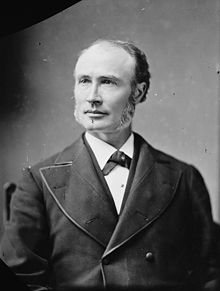William Claflin | |
|---|---|
 | |
| 27th Governor of Massachusetts | |
| In office January 7, 1869 – January 4, 1872 | |
| Lieutenant | Joseph Tucker |
| Preceded by | Alexander H. Bullock |
| Succeeded by | William B. Washburn |
| Member of the U.S. House of Representatives from Massachusetts's 8th district | |
| In office March 4, 1877 – March 3, 1881 | |
| Preceded by | William W. Warren |
| Succeeded by | John W. Candler |
| 27th Lieutenant Governor of Massachusetts | |
| In office January 4, 1866 – January 7, 1869 | |
| Governor | Alexander H. Bullock |
| Preceded by | Joel Hayden |
| Succeeded by | Joseph Tucker |
| 4th Chairman of the Republican National Committee | |
| In office 1868–1872 | |
| Preceded by | Marcus Lawrence Ward |
| Succeeded by | Edwin D. Morgan |
| Member of the Massachusetts House of Representatives | |
| In office 1849–1853 | |
| Personal details | |
| Born | March 6, 1818 Milford, Massachusetts |
| Died | January 5, 1905 (aged 86) Newton, Massachusetts |
| Political party | Free Soil Republican |
William Claflin (March 6, 1818 – January 5, 1905) was an American politician, industrialist, and philanthropist from Massachusetts. He served as the 27th governor of Massachusetts from 1869 to 1872 and as a member of the United States Congress from 1877 to 1881. He also served as chairman of the Republican National Committee from 1868 to 1872, serving as a moderating force between the Radical and moderate wings of the Republican Party. His name is given to Claflin University in South Carolina, a historically black college founded with funding from him and his father.
Claflin was educated at Brown University and worked in his father's shoe manufacturing business before becoming a partner in it. An opponent of slavery, he helped establish the state's Free Soil Party before dominating the state's Republican Party establishment in the 1860s. He supported a number of social reforms, including increased property and voting rights for women, and he was the state's first governor to actively support full women's suffrage.[1] He supported many charitable causes and promoted the development of the village Newtonville, where his country estate was located.
- ^ Moody, p. 111